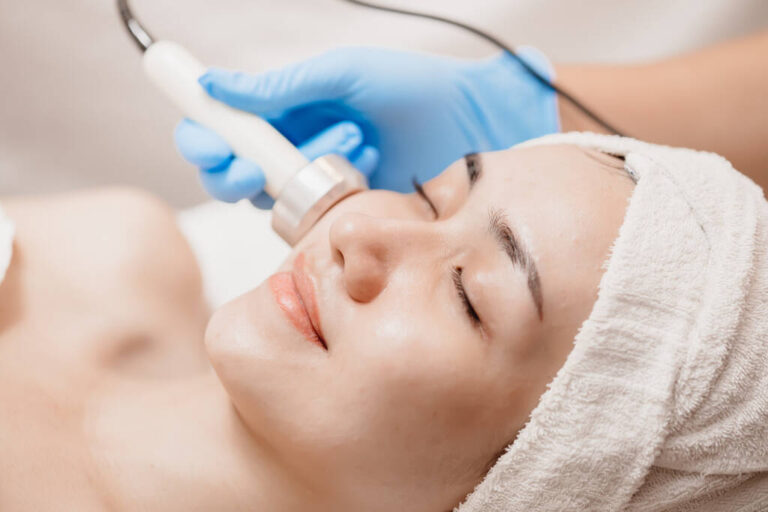
Depression
Depression, a complex mental health disorder affecting millions worldwide, often proves resistant to traditional treatment methods like medications and therapy. In recent years, a revolutionary technique known as Transcranial Magnetic Stimulation (TMS) has emerged as a promising alternative for those who haven’t found relief through conventional approaches. TMS utilizes magnetic fields to stimulate specific regions of the brain, offering new hope for those battling the depths of depression.
Understanding TMS
Transcranial Magnetic Stimulation is a non-invasive procedure that involves the application of magnetic pulses to targeted areas of the brain. The device used in TMS generates electromagnetic pulses that pass painlessly through the skull, inducing small electrical currents in the brain’s neurons. These currents stimulate nerve cells in the brain regions associated with mood regulation, effectively altering brain activity and potentially reducing the symptoms of depression.
How TMS Works
TMS primarily targets the prefrontal cortex, a brain region involved in mood regulation and emotional processing. In individuals with depression, this area often exhibits decreased activity. TMS helps to restore proper function by increasing the activity of neurons in this region, thereby modulating mood and potentially alleviating depressive symptoms. For those who suffer from dual-diagnosis this can further enhance outcomes.
The treatment is typically administered over multiple sessions, each lasting around 20 to 30 minutes. A coil emitting magnetic pulses is placed against the patient’s scalp, and the pulses are delivered in rapid succession. TMS is generally well-tolerated and does not require anesthesia. This means most patients can safely resume normal activities following treatment.
Efficacy and Benefits
Numerous clinical trials and studies have demonstrated the potential effectiveness of TMS in treating depression, particularly for individuals who have not responded well to other forms of treatment. TMS has shown significant improvements in mood, reduced symptoms of depression, and an enhanced overall quality of life. Moreover, the benefits of TMS extend beyond its efficacy; it lacks the side effects often associated with medications and does not involve the invasive procedures that certain alternative therapies require.
TMS for Treatment-Resistant Depression
One of the most significant breakthroughs of TMS is its applicability to treatment-resistant depression (TRD), a condition where patients do not respond adequately to multiple rounds of traditional antidepressant medications. TMS provides a new avenue of hope for individuals who have felt trapped in the relentless grip of depression, offering the potential for transformative outcomes where other treatments have fallen short.
Safety and Considerations
TMS is considered a safe procedure with minimal risks. The most common side effects are mild and transient, including headache and scalp discomfort at the site of stimulation. Seizures are exceedingly rare and occur in less than 0.1% of cases. However, TMS is not suitable for individuals with certain medical conditions, such as epilepsy or implanted metallic devices in the head. Additionally, if the patient has substance use disorder, a full body detox could potentially improve the effectiveness of the treatment.
TMS for Dual Diagnosis
TMS has primarily been studied and used for the treatment of mood disorders, such as major depressive disorder and bipolar disorder. While TMS may be beneficial for individuals with a dual diagnosis, there is still much to be discovered.
TMS can potentially help with the mental health aspect of a dual diagnosis, such as depression or anxiety. However, it should be integrated into a broader treatment plan that addresses both the mental health and substance use components, and individualized treatment decisions should be made based on a comprehensive assessment by healthcare providers experienced in dual diagnosis management.
Conclusion
Transcranial Magnetic Stimulation represents a groundbreaking advancement in the field of depression treatment. By non-invasively targeting specific brain regions, TMS offers new hope to those who have struggled to find relief from depressive symptoms through traditional methods. The ability to improve mood and quality of life without the substantial side effects of medications or the invasiveness of surgical interventions makes TMS a promising option for individuals seeking alternative solutions.
As research continues to unfold, it is likely that, when combined with traditional talk therapy, TMS will become an even more refined and widely available treatment option for depression. While it may not be a one-size-fits-all solution, TMS stands as a testament to the remarkable progress being made in the realm of mental health treatment, bringing newfound optimism to individuals facing the daunting challenges of depression.
Transcranial Magnetic Stimulation (TMS) is a non-invasive brain stimulation technique used to treat various mental health conditions, including depression and certain anxiety disorders. Dual diagnosis refers to the presence of both a mental health disorder and a substance use disorder in an individual. The term is often used when someone has a co-occurring mental health condition, such as depression or anxiety, along with a substance addiction.
Write and Win: Participate in Creative writing Contest & International Essay Contest and win fabulous prizes.


